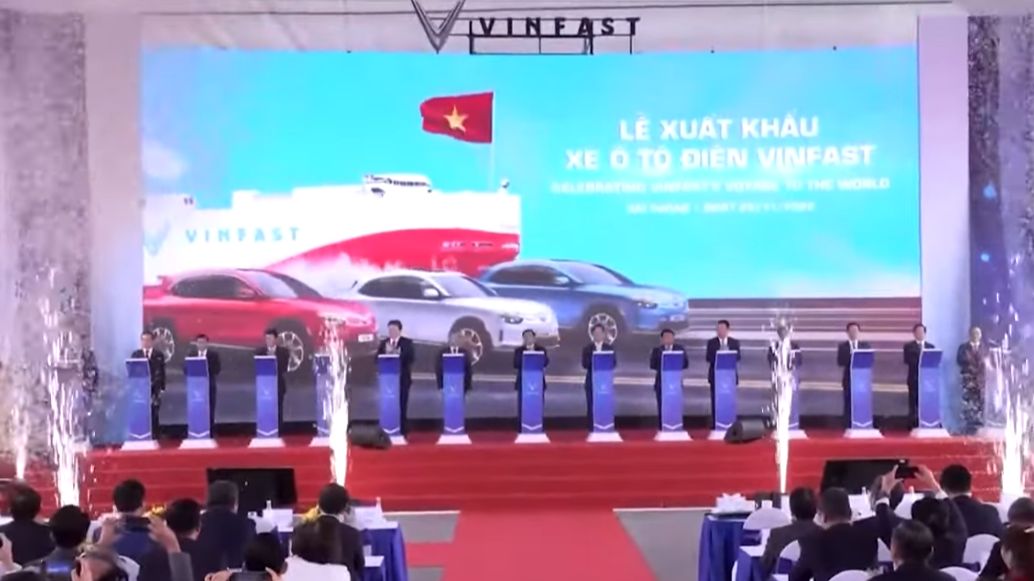VinFast is the first car company to sell via livestream on TikTok Shop while collaborating with famous streamers. VinFast has made a name for itself with a series of livestreams on the review channel of the leading male streamer in Vietnam, with over 200 cars finding owners. In addition, popular names like Ân Ân, Quỳnh Lương, Hà Linh also helped the company secure dozens of orders after each livestream. While electric motorcycles are the focus, what about VinFast's ace in the hole? I am also very curious about how VinFast's electric cars are doing, especially since there are not many electric cars like VinFast in my homeland.
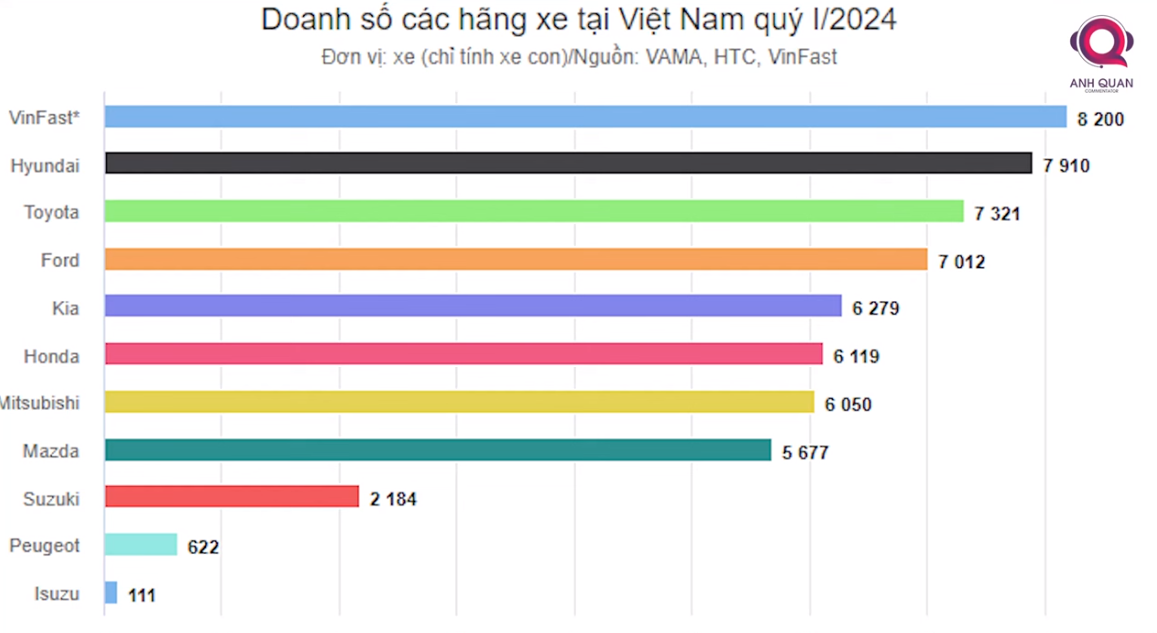
Instead of being proud that VinFast has helped put Vietnam on the global automotive map, the brand of billionaire Nguyen Nhat Vuong has become the subject of suspicion, criticism, ridicule, and even had construction materials thrown at it, with accusations of high prices, copying, and patching. Along with the latest figures VinFast announced global sales of 9689 cars in the first quarter of 2024, a 444% increase compared to the same period in 2023. However, the company did not disclose specific figures for each market.
Let's calculate according to the data from Kelly Blue Book, the leading US company in automotive valuation and market research. VinFast's sales in the US in the first quarter of this year were 927 cars, ranking 23rd in the electric car market. VinFast's market share in the United States increased by about 0.3%. Besides Vietnam, VinFast currently delivers cars in two other markets, the US and Canada. The European markets have not yet totaled sales, with the North American markets totaling nearly 1500 cars. Therefore, VinFast's sales mainly come from the Vietnamese market, about 8200 cars. With this sales volume, VinFast is at the top domestically, along with Hyundai, Toyota, and Ford, as the brands with sales over 7000 cars in the first quarter, with about 75% of VinFast's sales coming from taxi services, especially GMS.
Therefore, if we only consider retail sales, VinFast's sales rank around eighth in the Vietnamese market, not bad but actually quite impressive for a brand that was only established six years ago. The first ideas about a Vietnamese car may have originated from a not-so-unfamiliar truck brand with the 7x-8x generation. Vinasuki, founded by Mr. Bui Ngoc Huyen, but from a successful business with the ambition to produce "Made in Vietnam" cars, all Vinasuki car factories had to cease operations in 2014 due to massive debts. The dream of "Made in Vietnam" cars collapsed. More than 20 years later, in 2017, in Hai Phong, the largest port city in Vietnam, VinFast built a world-class car production complex in just 21 months from a swampy area and launched three car models. This is considered a rare and remarkable speed in the global automotive industry, with Vietnamese cars designed in Italy and using German technology, produced within just 11 months from the car model vote in October 2017, and less than one and a half years since VinFast was established in June 2017.
It usually takes 4 to 6 years to go from idea to production of a completely new car. What most original equipment manufacturers do in 60 months, we are doing in 24 months," CEO James B. Delucca said when describing VinFast's lightning-fast introduction of its first two car models at the 2018 Paris Motor Show. On June 17, 2019, after three days of official sales, 561 VinFast Fadil cars were delivered to customers. This event somewhat dispelled doubts about the purpose and effectiveness of VinGroup when deciding to enter the car manufacturing industry, especially when the market already had many well-established names with decades of experience like Thaco, Thanh Cong, Toyota, and Honda. In January 2021, VinFast announced its vision to become a global smart electric car company, and shortly after, VinFast surprised the market and somewhat disappointed it by suddenly announcing the cessation of petrol car production starting from July 15, 2022.
It usually takes 4 to 6 years to go from idea to production of a completely new car. What most original equipment manufacturers do in 60 months, we are doing in 24 months, CEO James B. Delucca said. When describing the speed of VinFast when introducing the first two models of the company at the 2018 Paris Motor Show. On June 17, 2019, after three days of official sales, 561 VinFast Fadil cars were delivered to customers. This event somewhat dispelled doubts about the purpose and effectiveness of VinGroup when deciding to enter the car manufacturing industry, especially when the market already has many well-known names with decades of experience such as Thaco, Thanh Cong, Toyota, Honda. In January 2021, VinFast announced its vision to become a global smart electric car company, then surprised the entire market and somewhat disappointed when suddenly announcing the cessation of gasoline car production starting from July 15, 2022.
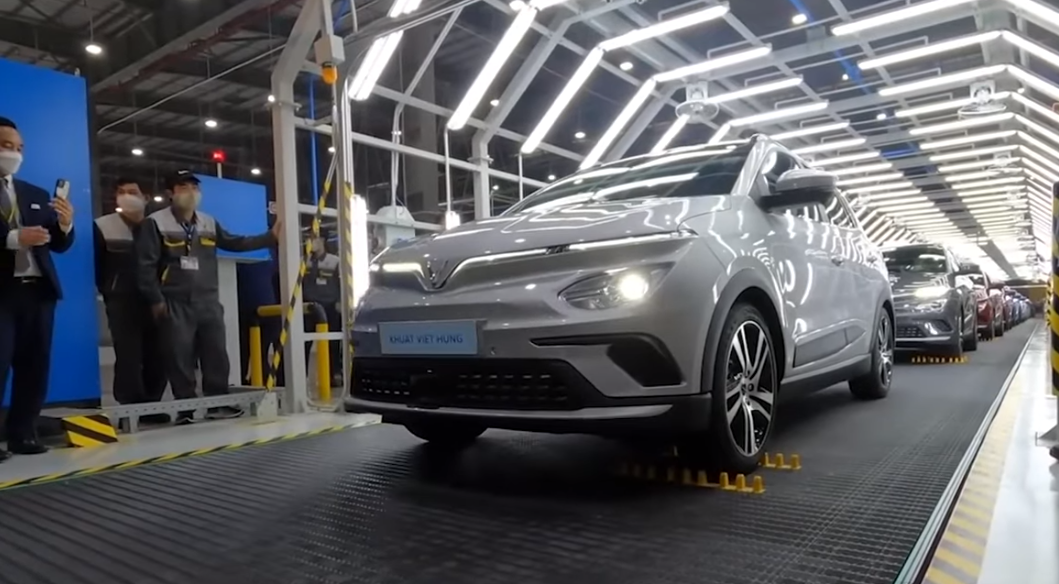
Vietnam's first electric car is named VinFast VFe34, immediately after its launch, the latest electric car model from VinFast received positive support from customers, and after 12 hours of sales, VinFast recorded over 3,000 new orders. After 3 months, this number increased to over 25,000 orders, including 10,000 online orders. This is a record unprecedented in the Vietnamese car market. Looking back, everything VinFast does has its reasons. VinFast quickly launched in 2018, which coincided with November 1, 2018, when import taxes on cars among ASEAN countries officially dropped to 0% under the ASEAN Trade in Goods Agreement.
Imagine when import taxes are reduced to zero, cars from ASEAN will flood into Vietnam, including Thailand, Indonesia, major car manufacturers, or Malaysia with a strategy to create their own domestic brands and government protection to defeat foreign brands. To start, VinFast could not begin with cheap cars, but with high prices, it would be difficult to compete with imported cars from those countries. The only advantage VinFast has is that it is under Vingroup, meaning VinGroup has enough resources to support VinFast during difficult times, using funds from other business activities to invest in making cars. Then, they can release more affordable models suitable for Vietnamese consumers.
As for why they didn't start with electric cars from the beginning, even Mr. Pham Nhat Vuong admitted that six years ago, very few people wanted to use this type of vehicle.
Electric cars are very difficult to make, each one requires about 40 computers, it takes a whole year to connect these computers together, not to mention the need to invest in charging stations from scratch. In terms of expensive or cheap, it must be compared within the same segment, in the world, electric cars are always priced 1.3 to 1.5 times higher than gasoline cars in the same segment. In Vietnam, VinFast is applying relatively low prices for its electric car models, and electric cars are exempt from 100% of registration fees, so VinFast cars from segment A to E have lower actual costs for users to use, even lower than gasoline cars that have to pay 10 to 12% registration fees.
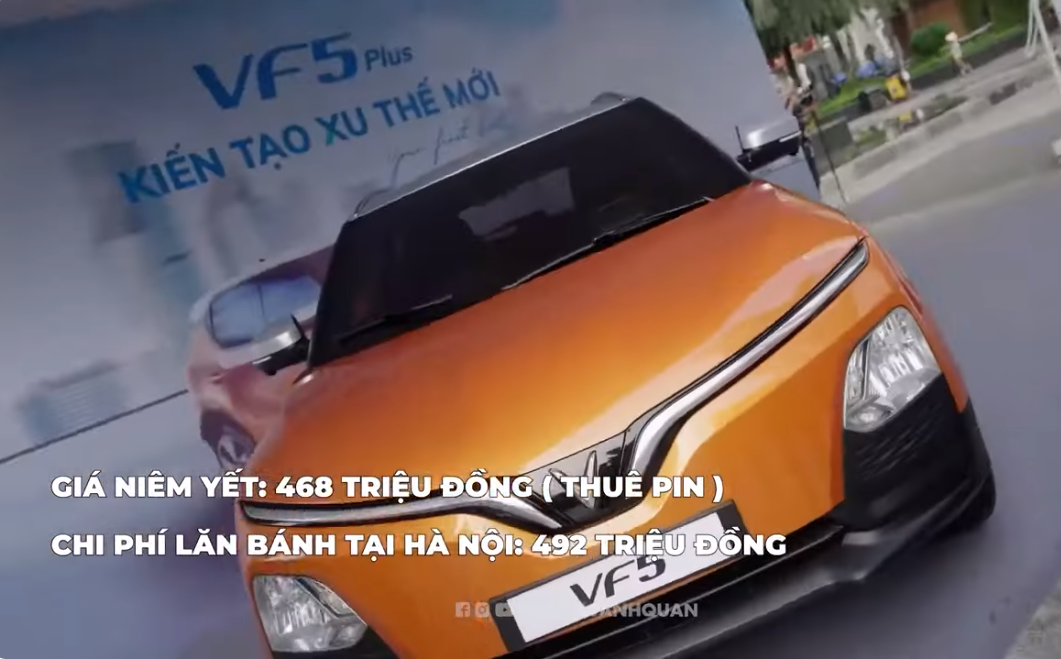
For example, the VinFast VF5 Plus has a listed price of 468 million VND, but the actual cost in Hanoi is only 492 million VND. This amount is lower than Toyota Raize, which is priced at 498 million VND, with an actual cost of 581 million VND. The VF5 Plus will cost about 400,000 VND per km for charging when buying a car with a battery, or if renting a battery, it will be 900 VND per km including charging and battery rental, while the Toyota Raize will cost about 1600 VND per km because it consumes 6.6 liters of gasoline per 100 km. This cost will be even more economical with higher usage, and the cost of using electric cars is usually stable and less prone to fluctuations compared to gasoline cars depending on oil prices.
In addition, maintenance costs for electric cars are 12,000 km per maintenance, while gasoline cars need maintenance every 5000 km, the cost of each maintenance for electric cars is also lower due to fewer components needing replacement. Not to mention that VinFast offers a warranty period of 7 to 10 years for its electric car models, which is two to three times longer than its competitors. Observers evaluate VinFast's car prices as a bargain. Combined with the expanding charging station infrastructure in all 63 provinces and cities, the number one after-sales service in the market will provide a great incentive for users to switch from gasoline cars to green vehicles. Finally, if even a screw cannot be made today, then there is no complex technological product that is produced by a single company or country.
The iPhone 15 you bought last year was manufactured in China or India, with chips from Taiwan, screens from South Korea, batteries from Hong Kong, similarly, a car coming off the production line will be a combination of about 14 to 18 different countries. This is a production chain that has been globalized, not just Vietnam, no moderately developed country can make a screw alone. The question is whether anyone needs your screw or not, and whether producing screws brings real economic benefits or not.
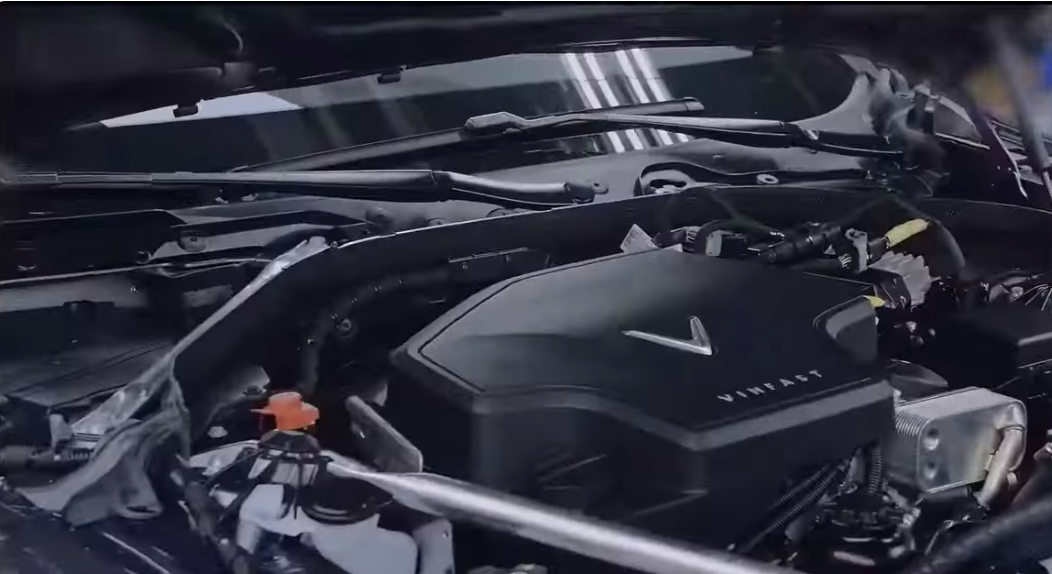
VinFast's acquisition of technology and gathering renowned technology engineers from around the world to build its car manufacturing industry is naturally unquestionable and does not care where it comes from or how. Those are the investor's business and their lifelong career bet, what needs to be considered is whether VinFast cars can be sold or not. And the results have shown that VinFast is doing quite well domestically. The country needs people like Mr. Pham Nhat Vuong to hope for the future of the Vietnamese automobile industry, whether to buy or not is up to you. But if you don't have the opportunity to directly carry out this mission, the first way to support is not to throw stones.
